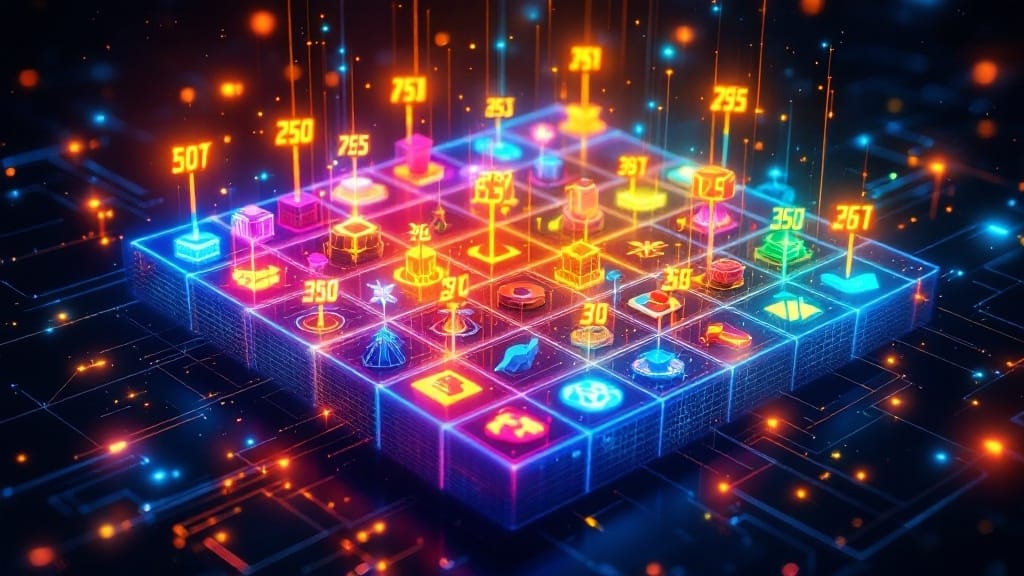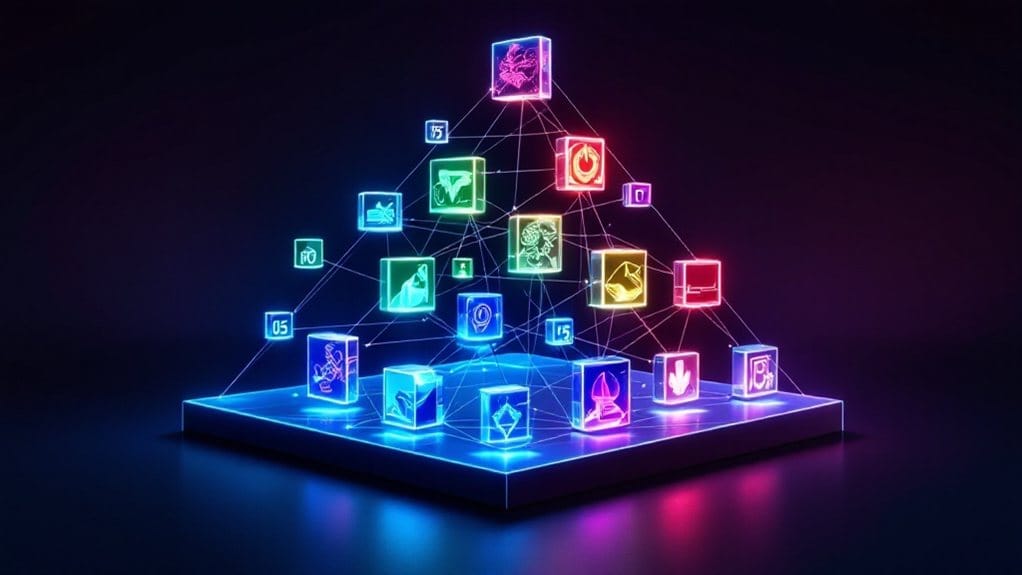NFT rarity ranking measures the uniqueness of digital assets through statistical analysis of their traits and attributes. The system evaluates specific characteristics, including visual elements, properties, and combinations of features, to determine an NFT’s scarcity within its collection. Specialized tools like Rarity Sniper calculate precise scores based on trait frequency and statistical occurrence, helping collectors assess potential value. This quantitative framework, combined with qualitative factors such as artistic merit and cultural significance, forms the foundation for understanding an NFT’s true market position.

In the dynamic world of digital collectibles, NFT rarity ranking has emerged as a vital metric for determining the relative uniqueness and potential value of non-fungible tokens within specific collections. This sophisticated evaluation system employs diverse calculation methods, including trait rarity ranking, average trait rarity, and statistical rarity analysis, to establish quantifiable measures of an NFT’s distinctiveness within its collection.
The calculation of NFT rarity involves multiple factors, with specialized tools like Rarity Sniper and Traitsniper conducting thorough analyses of trait frequencies, attribute combinations, and community engagement levels. Smaller collections increase rarity potential for individual tokens within the series. The Rarity Score formula helps determine exact trait values by dividing one by the ratio of items with that trait to total items. These platforms process vast amounts of data to generate rarity scores, enabling collectors and investors to make informed decisions about potential acquisitions and portfolio management strategies.
NFT rarity calculations leverage advanced tools to analyze traits and engagement, providing crucial data for strategic collection management.
Market dynamics greatly influence the impact of rarity rankings, as collectors typically attribute higher value to NFTs possessing uncommon traits or unique characteristic combinations. The relationship between rarity and value, however, extends beyond mere numerical calculations, incorporating factors such as artistic quality, creator reputation, and cultural significance, which collectively shape an NFT’s market position and long-term potential. The emergence of cross-platform trading capabilities has created additional opportunities for NFT collectors to maximize the value of their digital assets.
The evaluation process considers both quantitative and qualitative elements, with rarity tools examining specific attributes such as color schemes, animations, and sound effects that might distinguish one token from others in its collection. The total supply of NFTs within a collection, combined with the frequency of particular traits, creates a complex matrix of factors that determine overall rarity scores.
Collectors and investors utilize these rarity rankings as vital decision-making tools, though they must consider additional market factors such as community interest, creator reputation, and broader cryptocurrency market conditions.
The integration of rarity analysis into major NFT marketplaces has streamlined the process of identifying valuable assets, though the methodology continues to evolve as the NFT ecosystem matures and new evaluation techniques emerge. This systematic approach to rarity assessment has become foundational to understanding and guiding the increasingly sophisticated NFT marketplace.
FAQs
Can an Nft’s Rarity Ranking Change Over Time After Minting?
An NFT’s rarity ranking can fluctuate post-minting due to several technical factors, including platform algorithm updates, new trait findings within collections, and changes in statistical models.
Market dynamics and community perception shifts can alter the interpretation of rarity scores, while evolving traits in dynamic NFTs may impact their statistical scarcity.
Furthermore, refinements in rarity calculation methodologies can lead to ranking adjustments across platforms.
How Do Wash Trading and Market Manipulation Affect NFT Rarity Rankings?
While rarity rankings are based on trait frequencies, wash trading and market manipulation can distort perceived value without affecting actual rarity metrics.
Manipulators often target NFTs with specific rarity scores, creating artificial price floors through coordinated transactions. This manipulation can lead to misaligned market valuations, where NFTs with lower rarity scores command higher prices than genuinely rarer pieces, undermining the reliability of rarity-based pricing models.
What Happens to Rarity Rankings When an NFT Collection Is Delisted?
When NFT collections are delisted, their rarity rankings typically remain intact but become less accessible through mainstream platforms.
While the underlying blockchain data persists, collectors must rely on external tools and historical databases to verify rarity metrics.
Delisting affects market visibility and trading convenience but doesn’t alter the fundamental rarity characteristics, such as trait distribution and scarcity factors, that determine an NFT’s ranking within its collection.
Do Different NFT Marketplaces Use the Same Rarity Calculation Methods?
Different NFT marketplaces employ varying rarity calculation methods, though most use either statistical rarity or rarity score approaches as their foundation.
While OpenSea primarily utilizes the rarity score method, platforms like LooksRare and Rarible incorporate statistical rarity calculations.
Despite these differences, the relative rankings typically remain consistent across platforms, with only minor variations in specific numerical scores.
Are Rarity Rankings Influenced by Celebrity Ownership or Notable Wallet Addresses?
Celebrity ownership and notable wallet addresses do not directly influence NFT rarity rankings, which are primarily calculated through statistical algorithms based on trait frequencies.
However, these factors can indirectly impact market perception and value through increased visibility, community interest, and market demand.
While rarity calculations remain objective, celebrity involvement often creates heightened attention and perceived prestige, potentially affecting the NFT’s general market performance and desirability.









